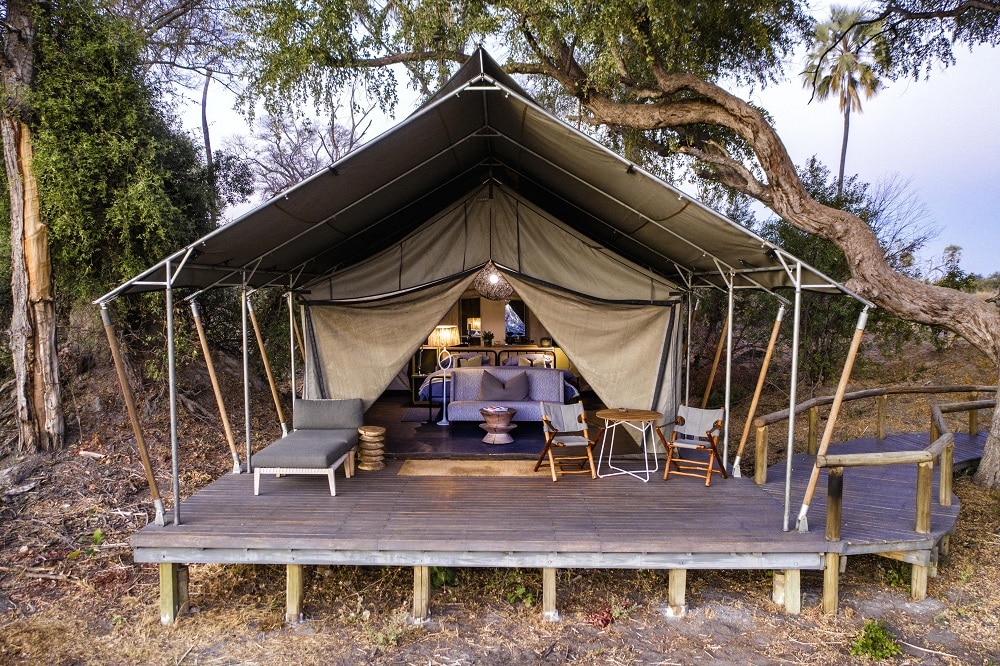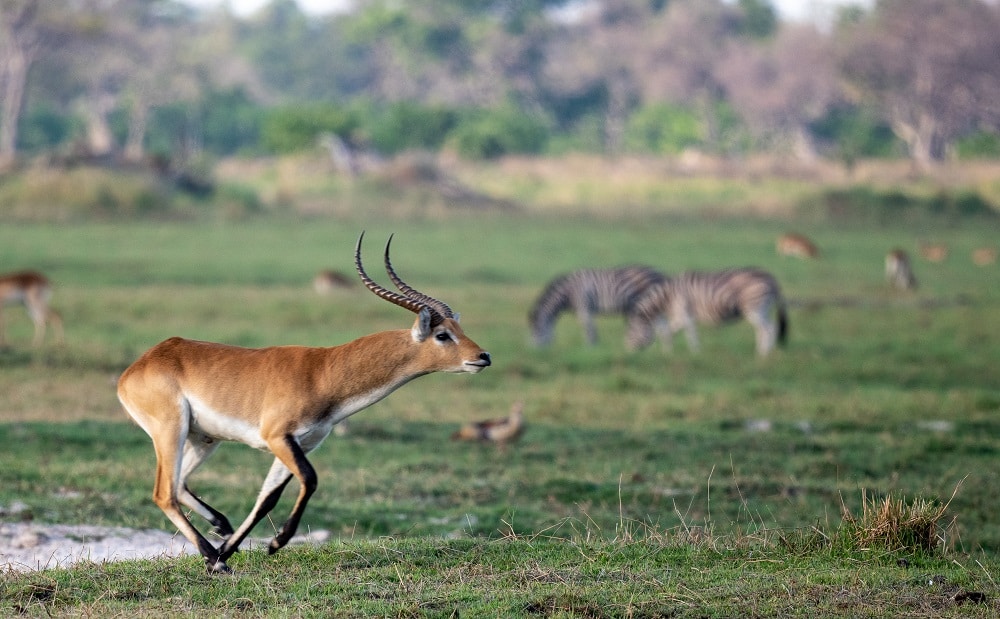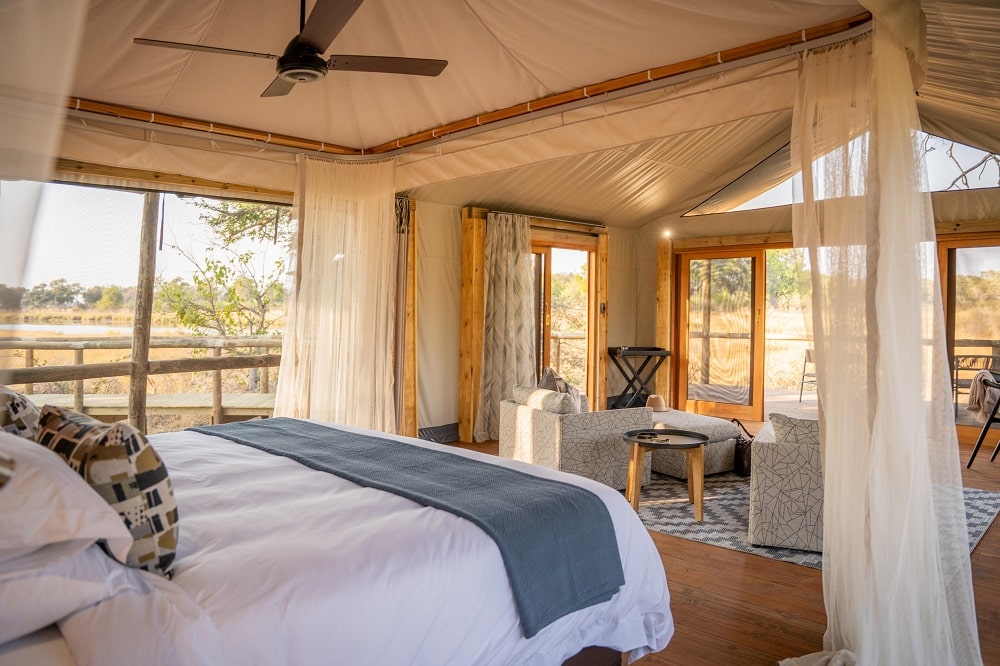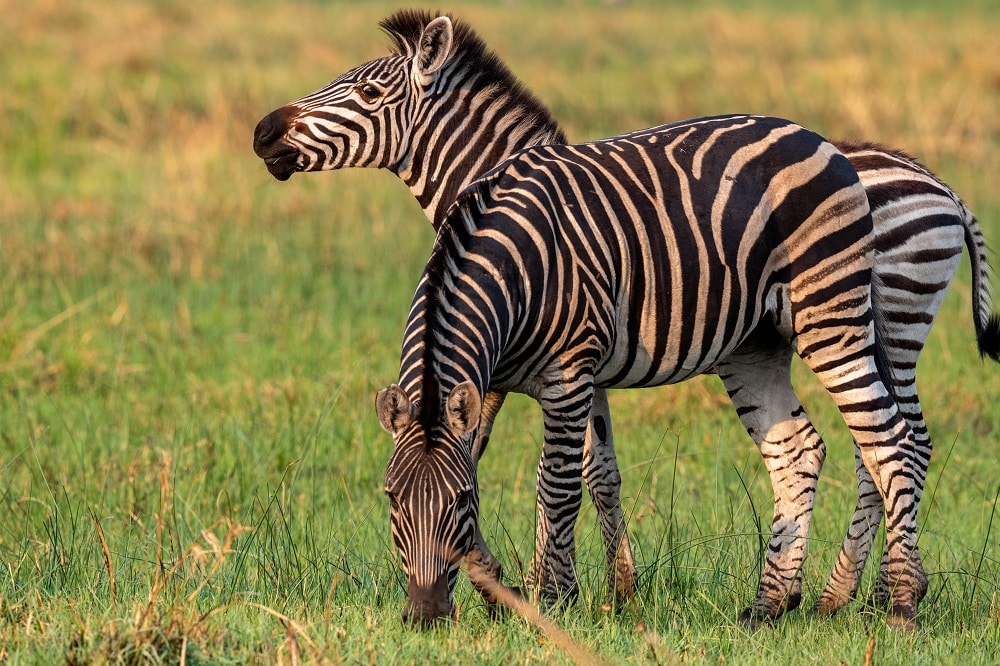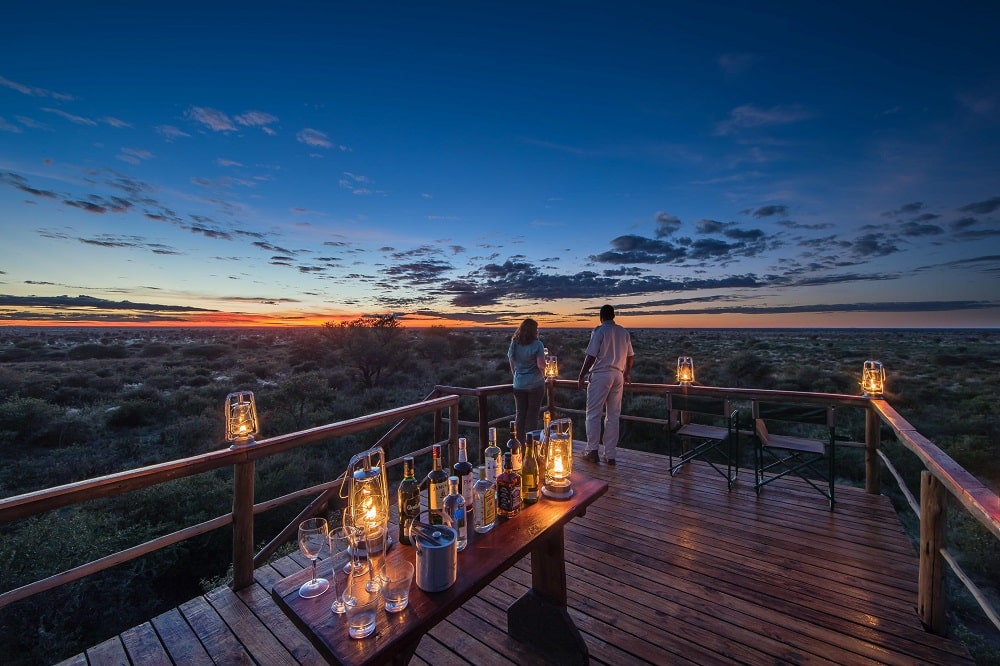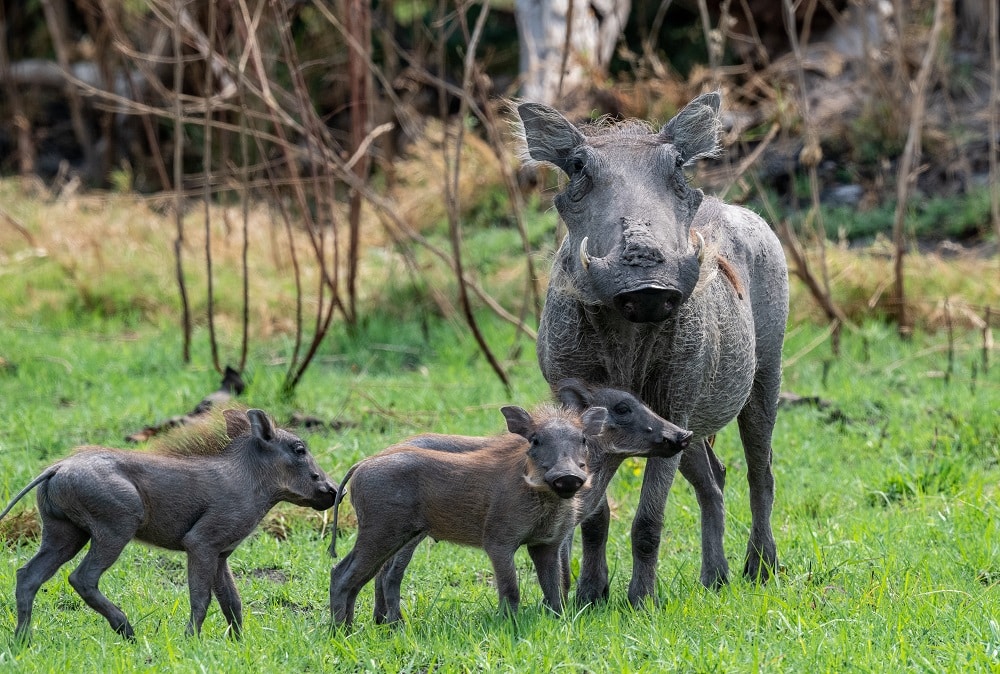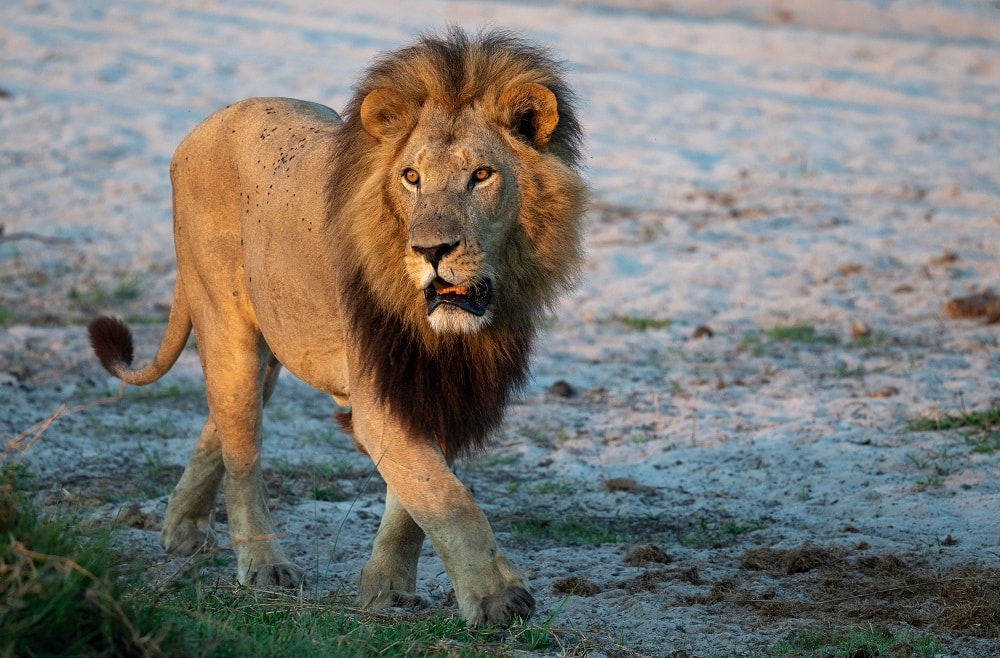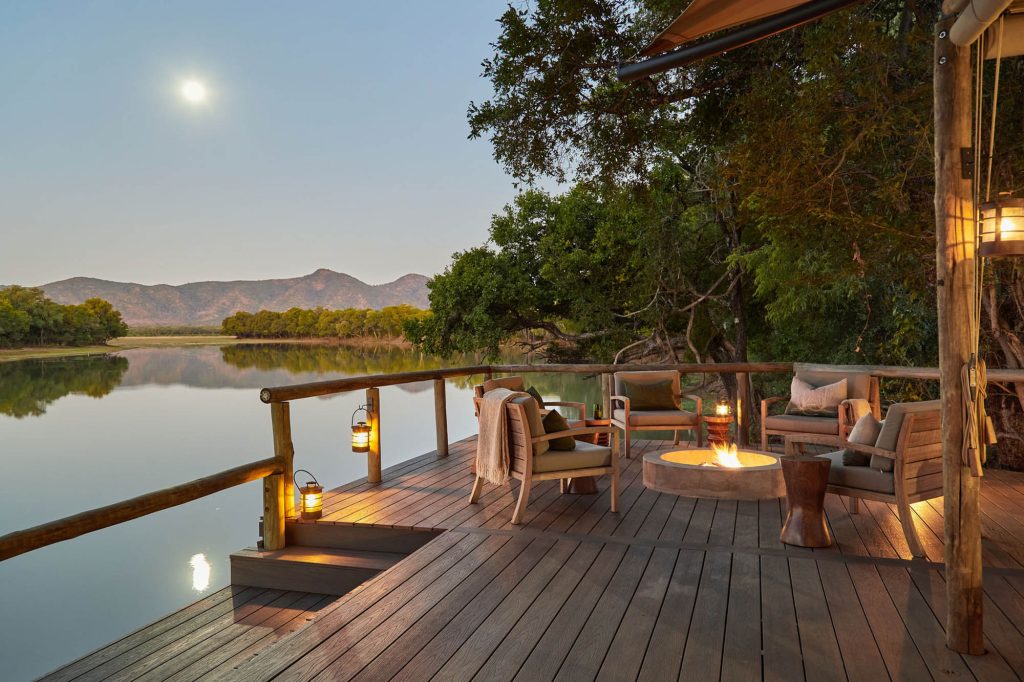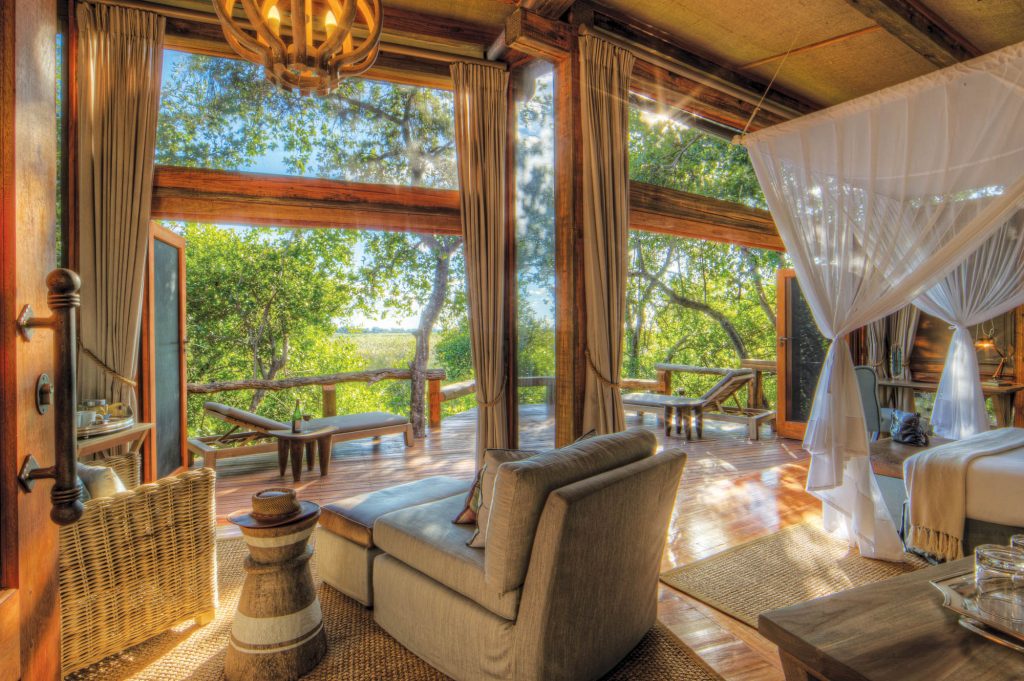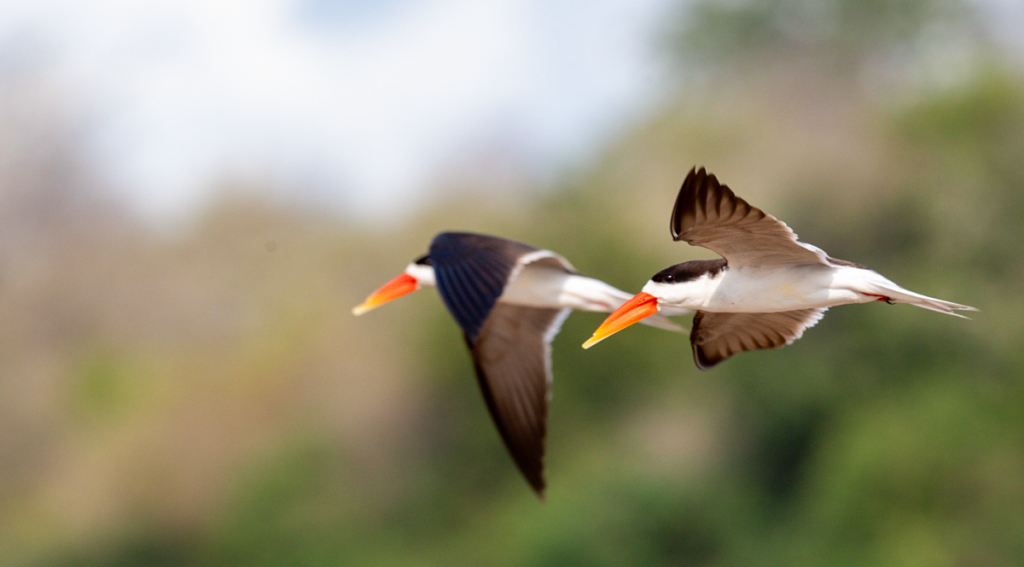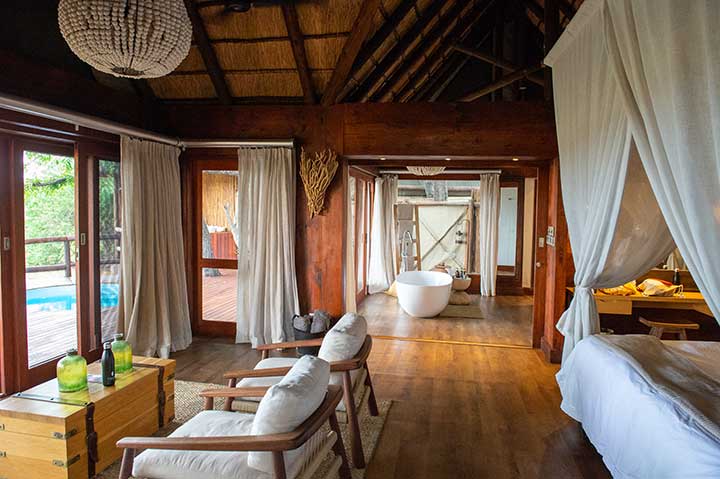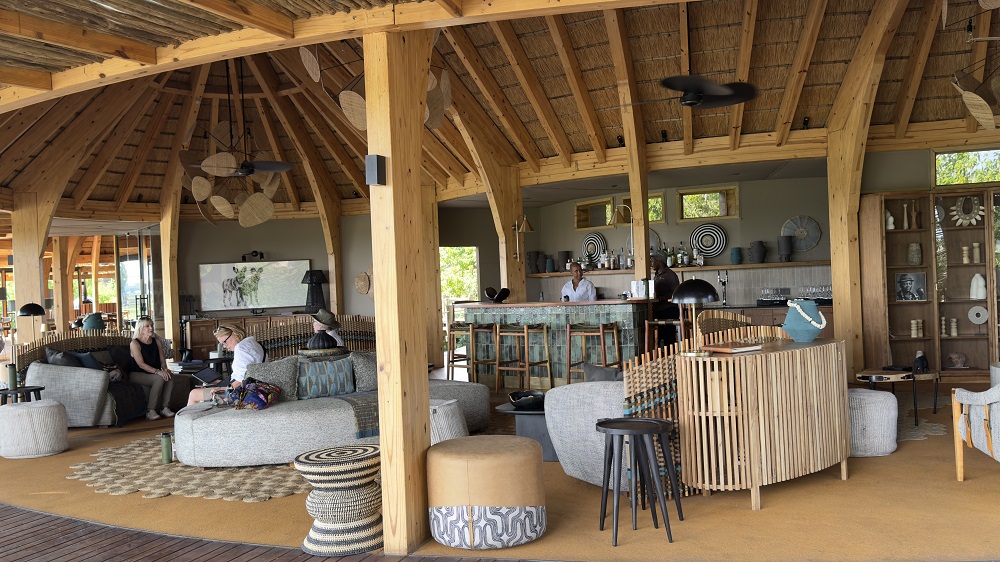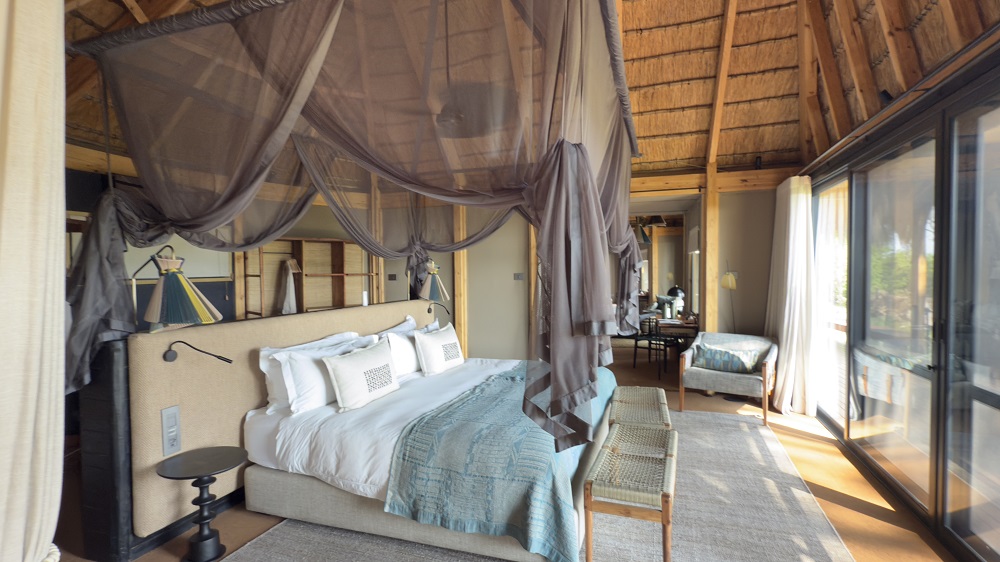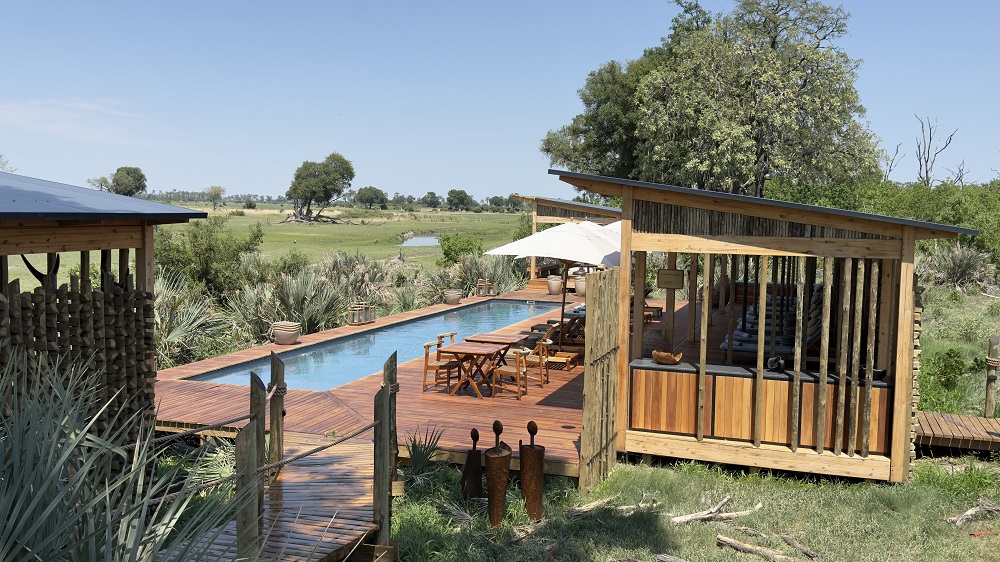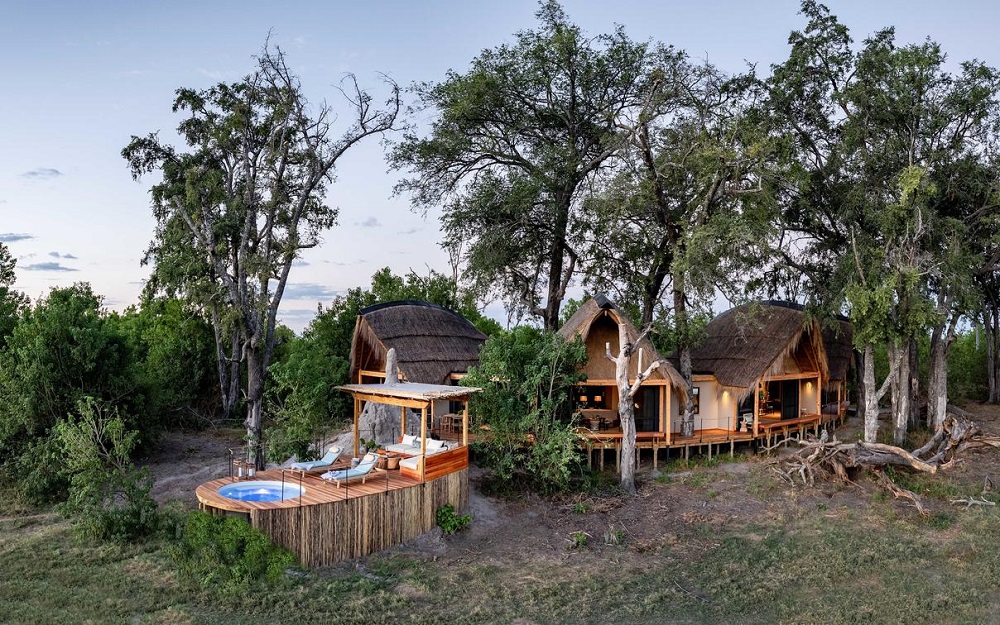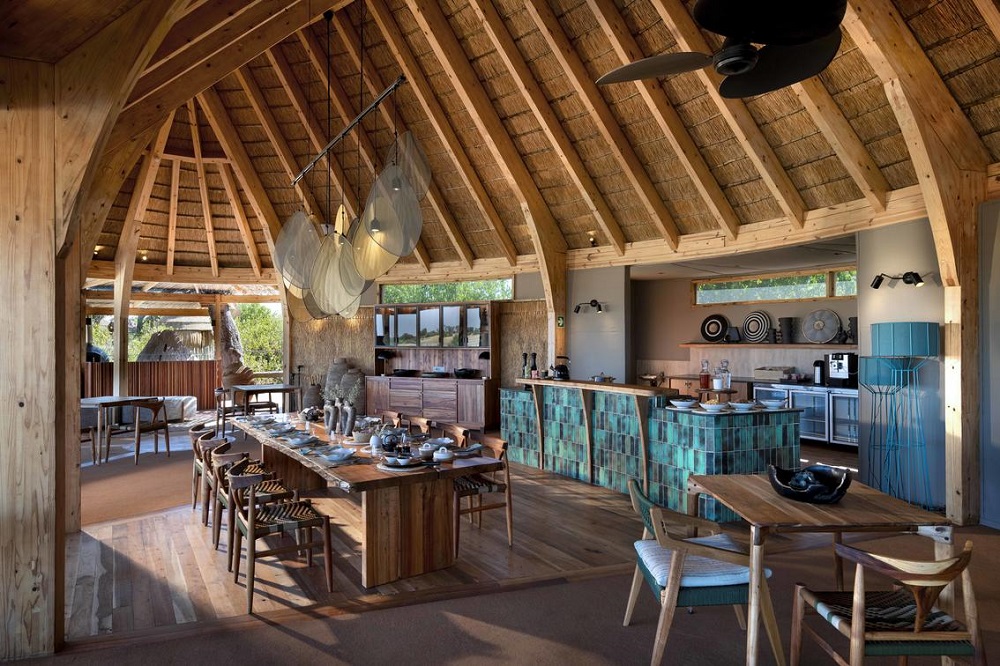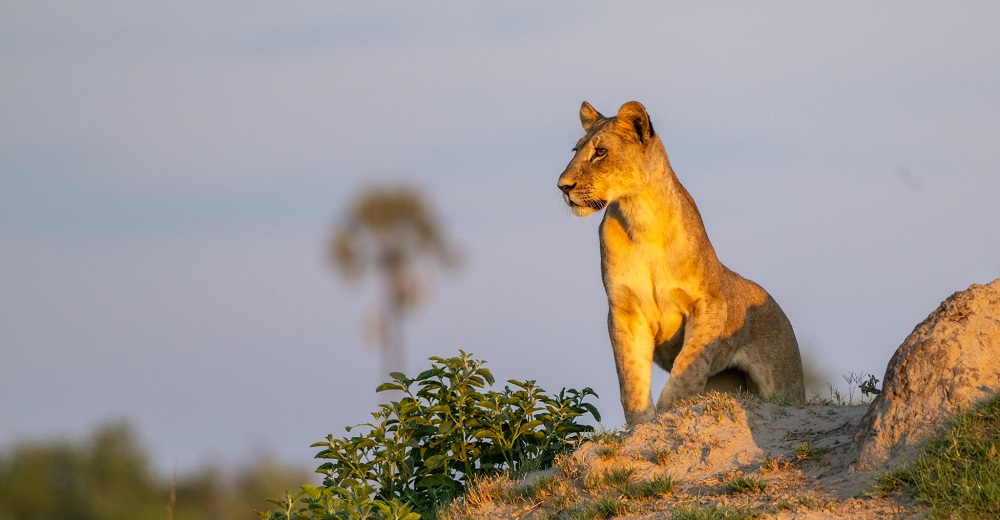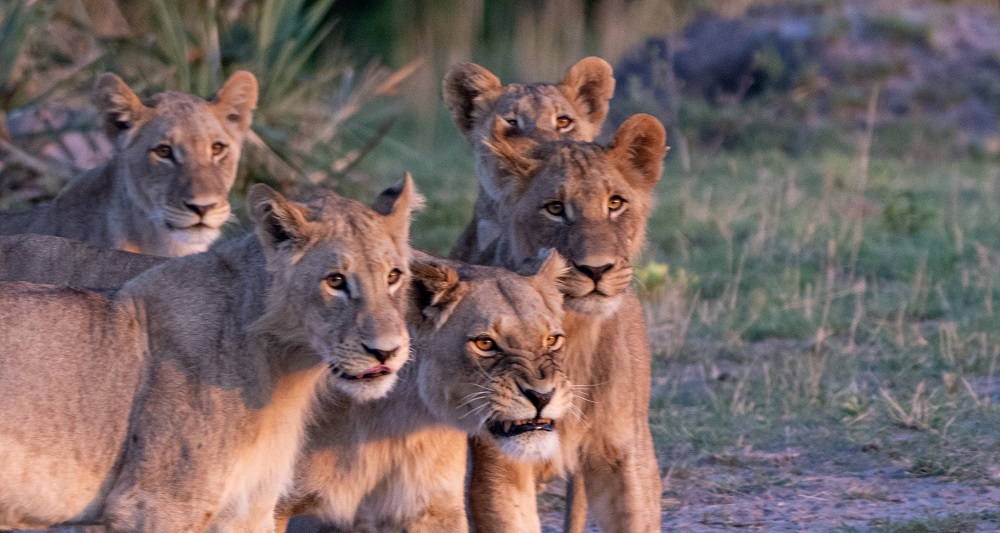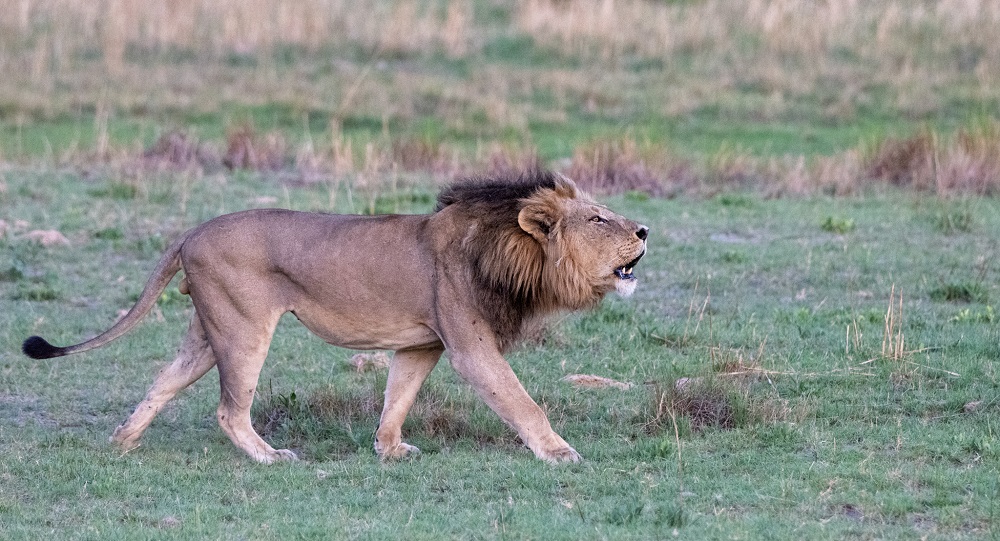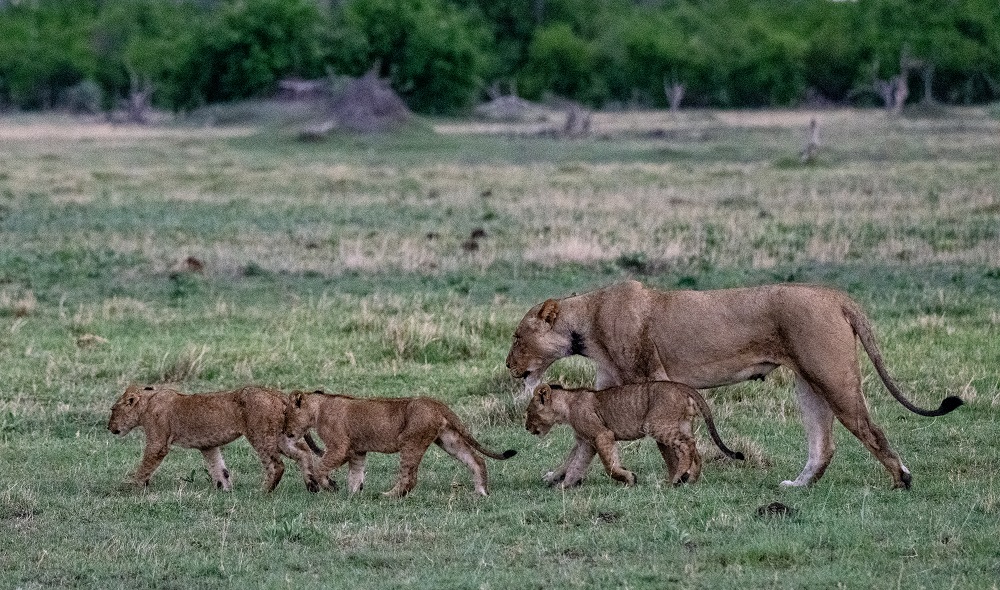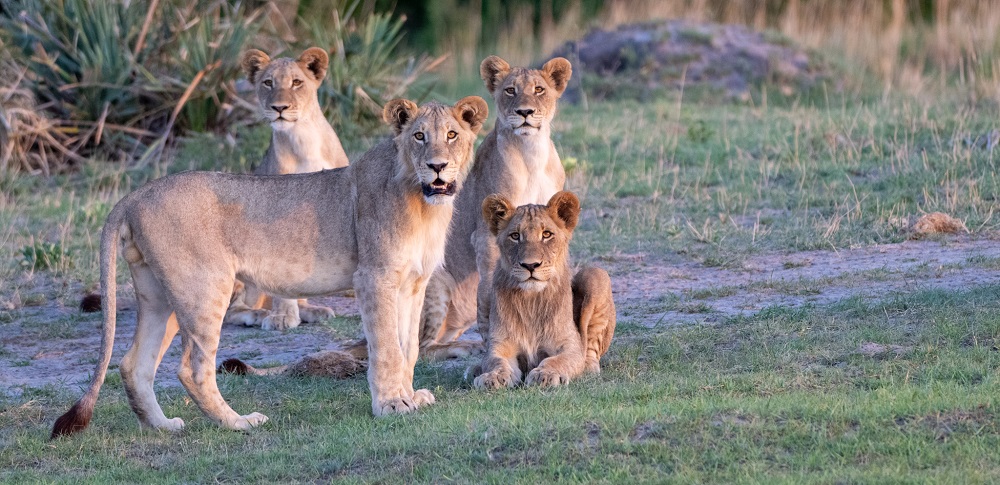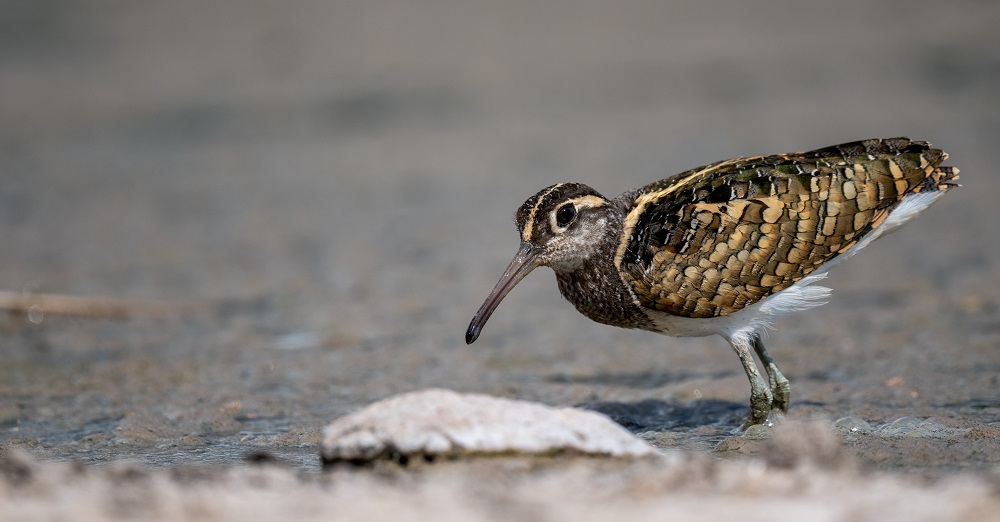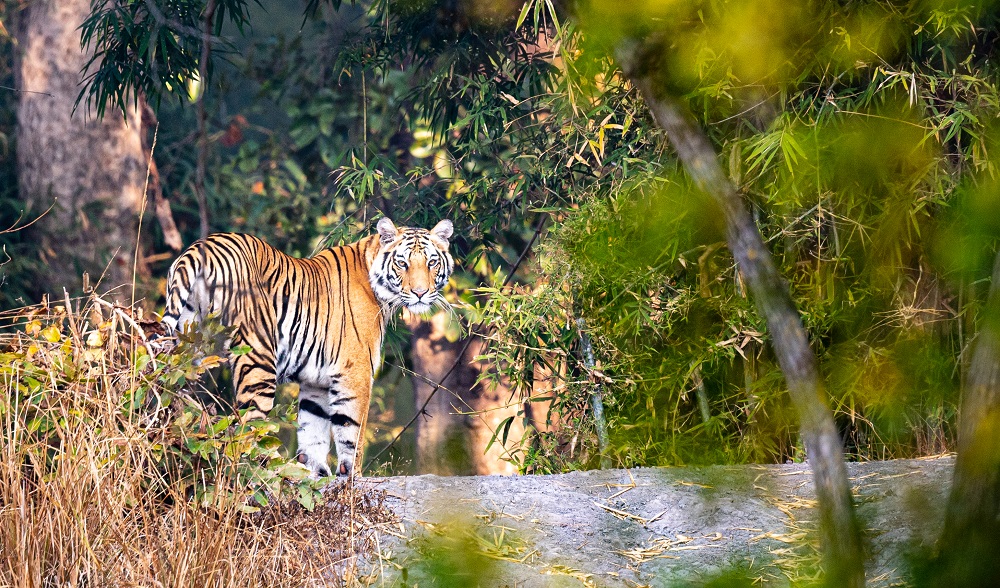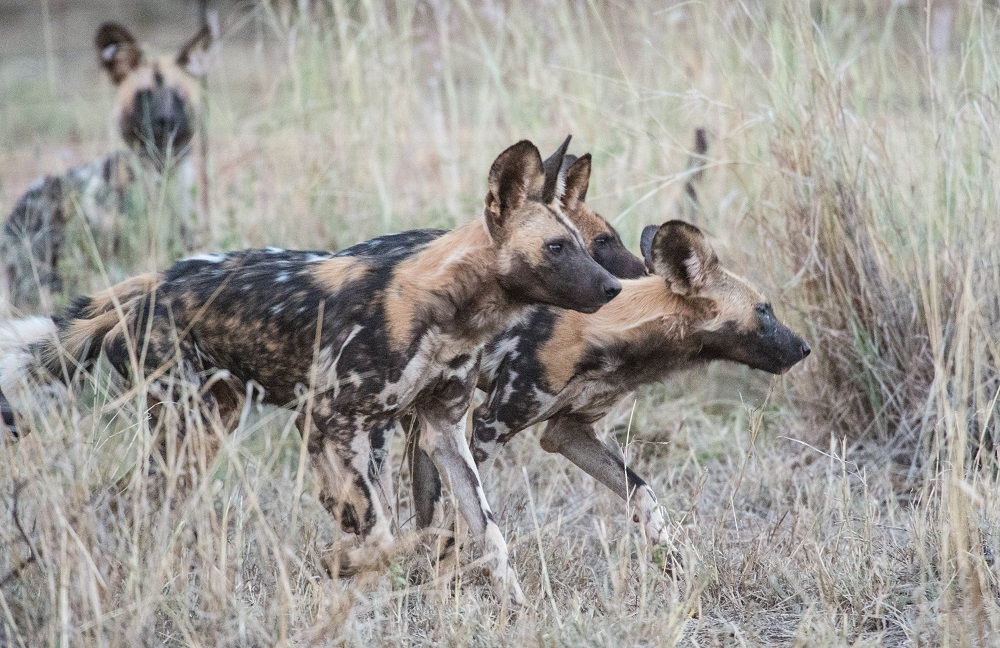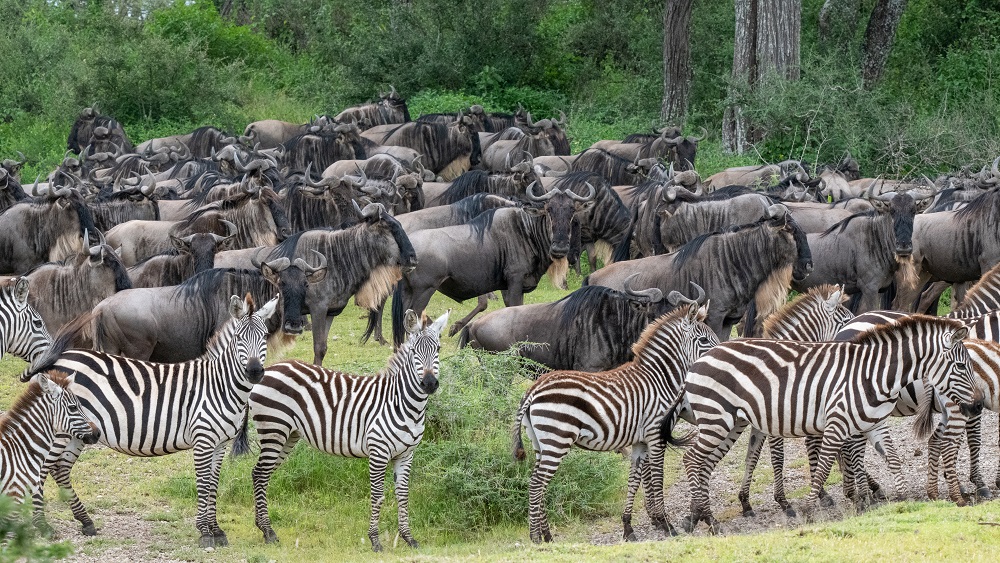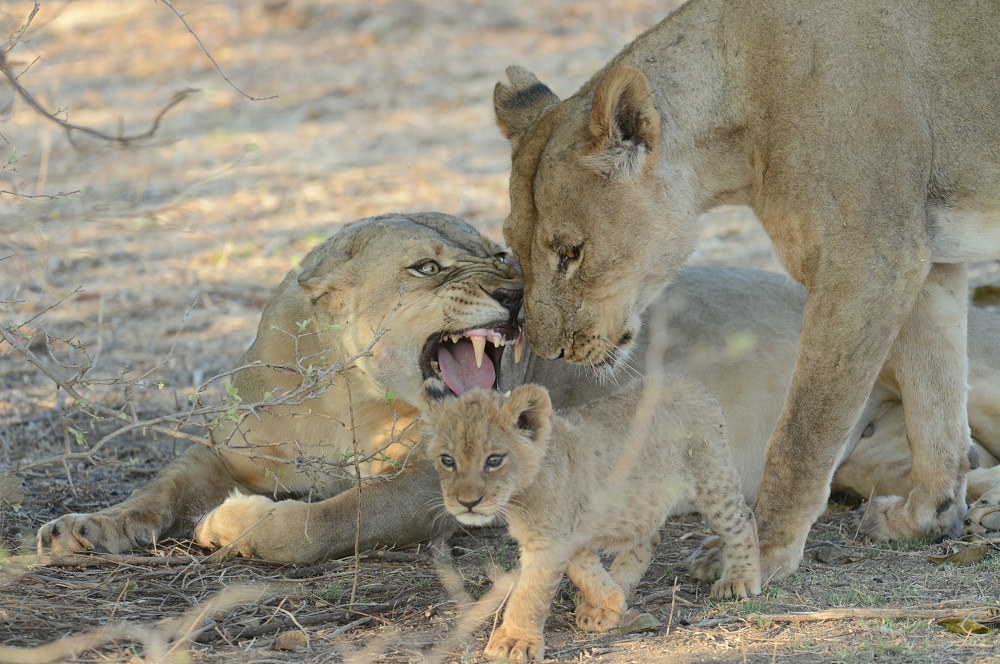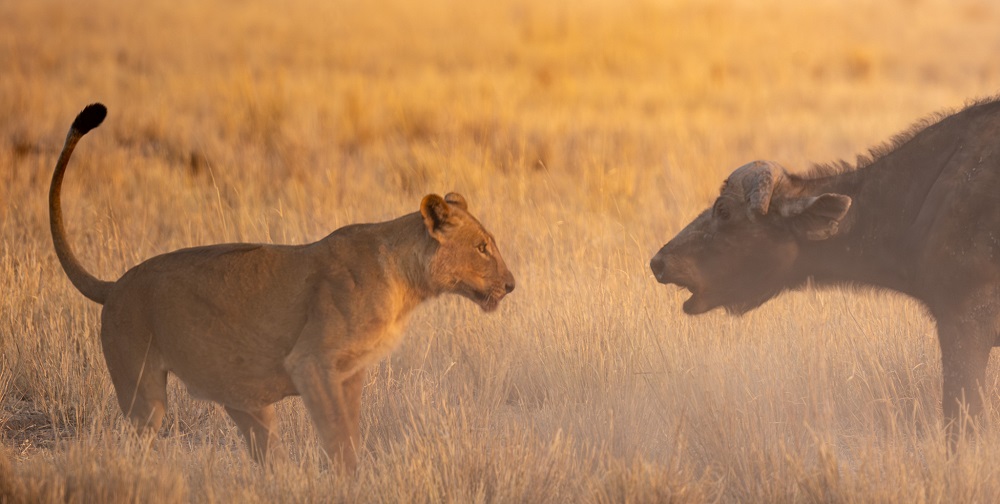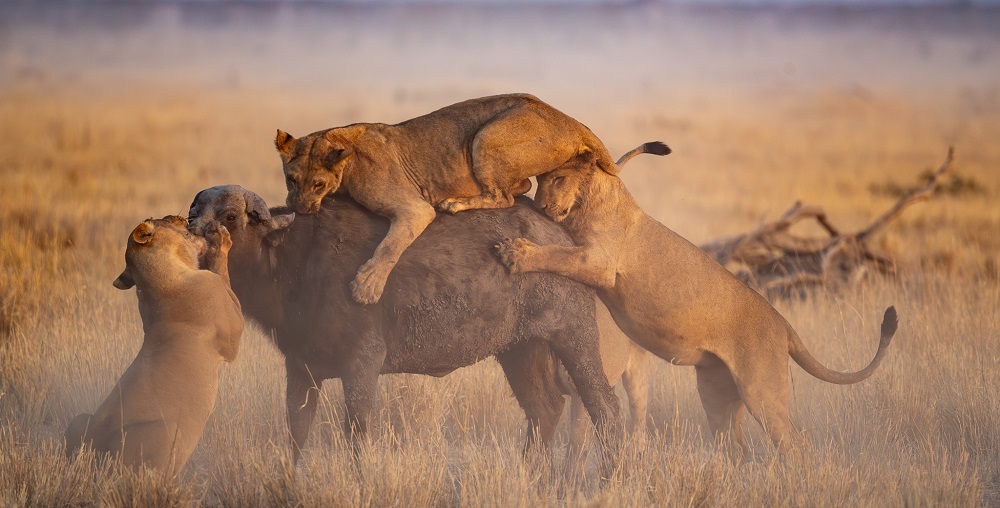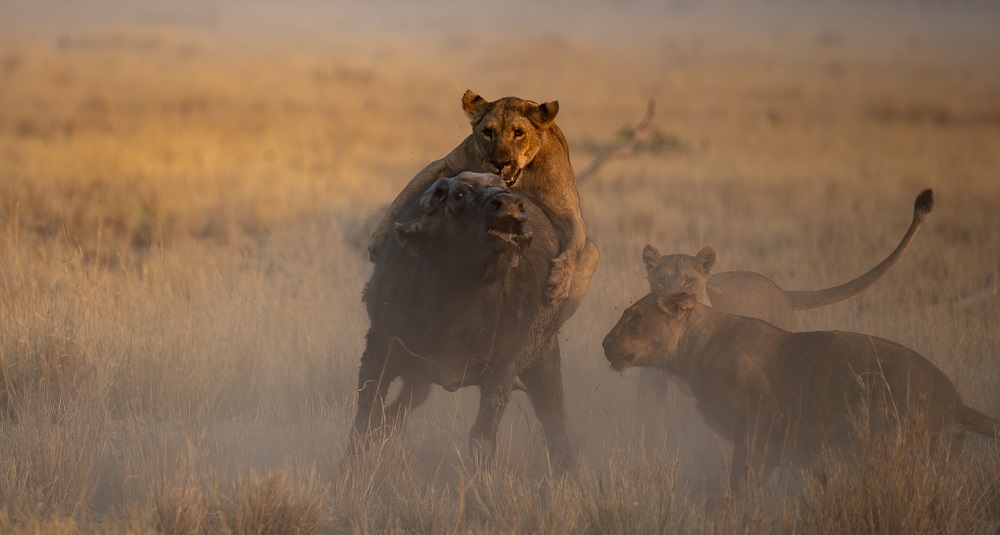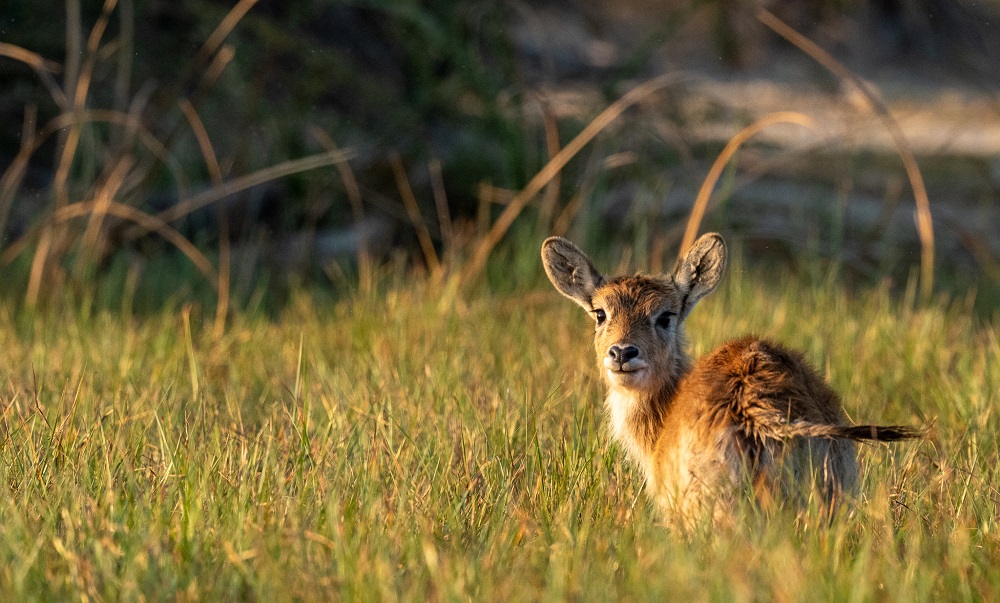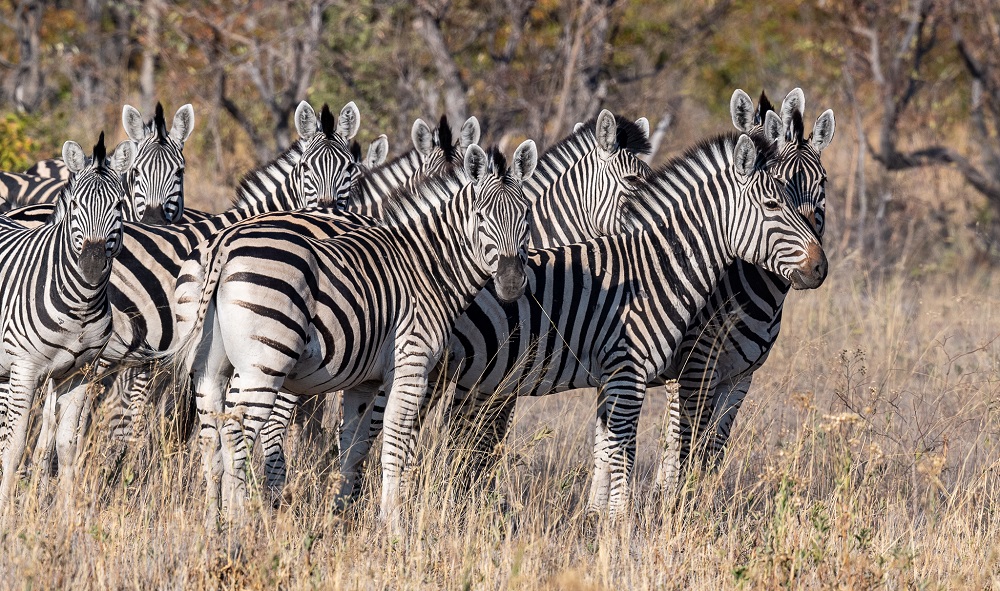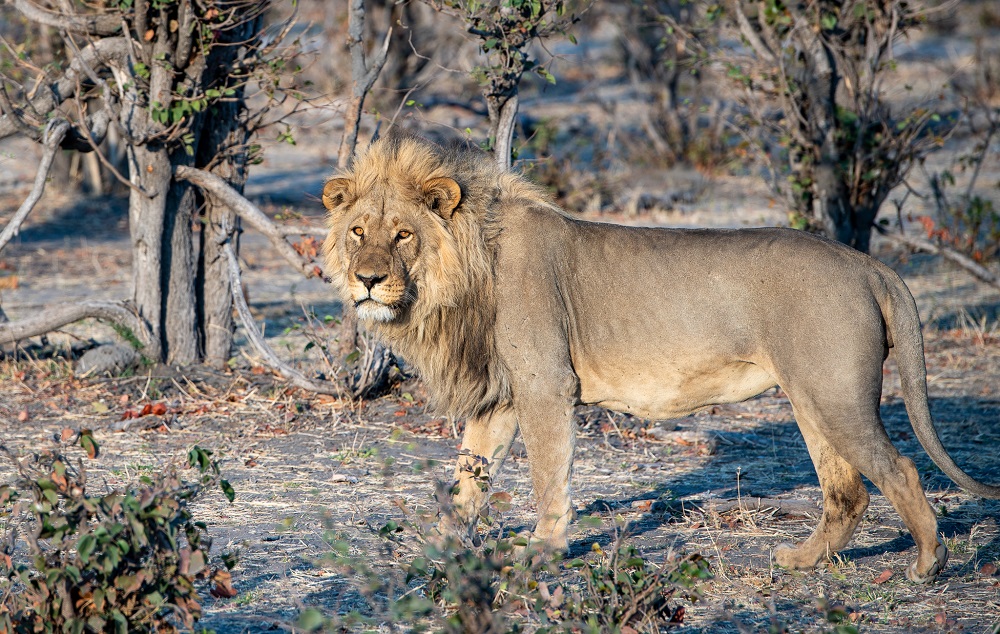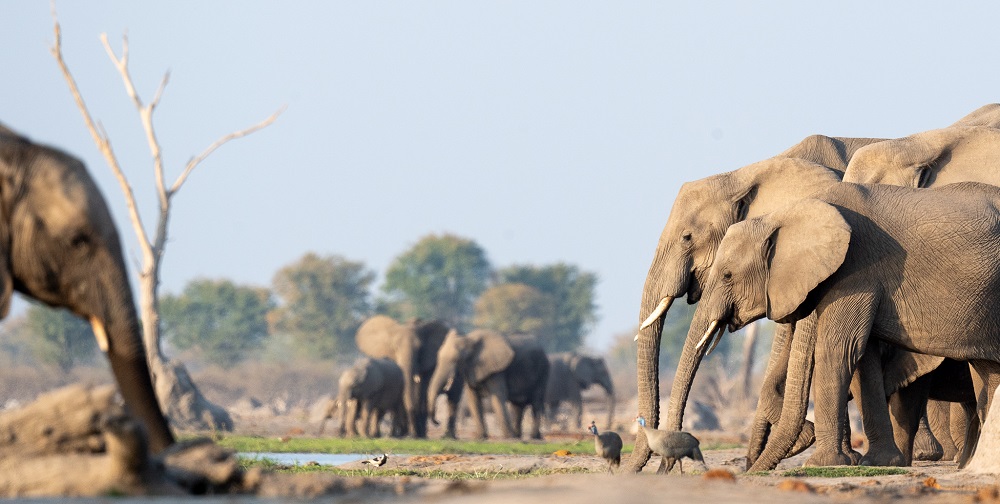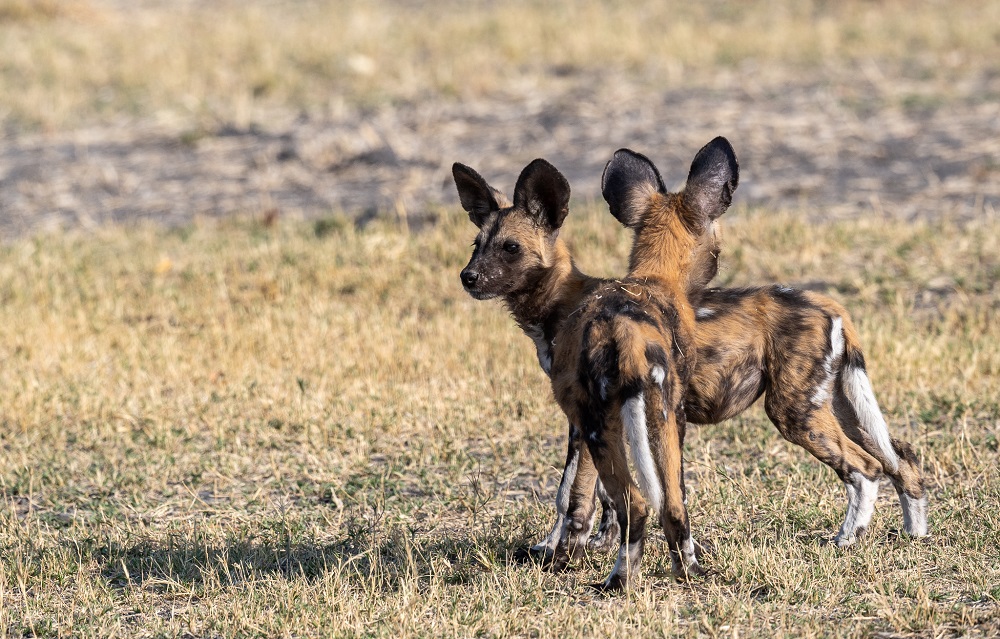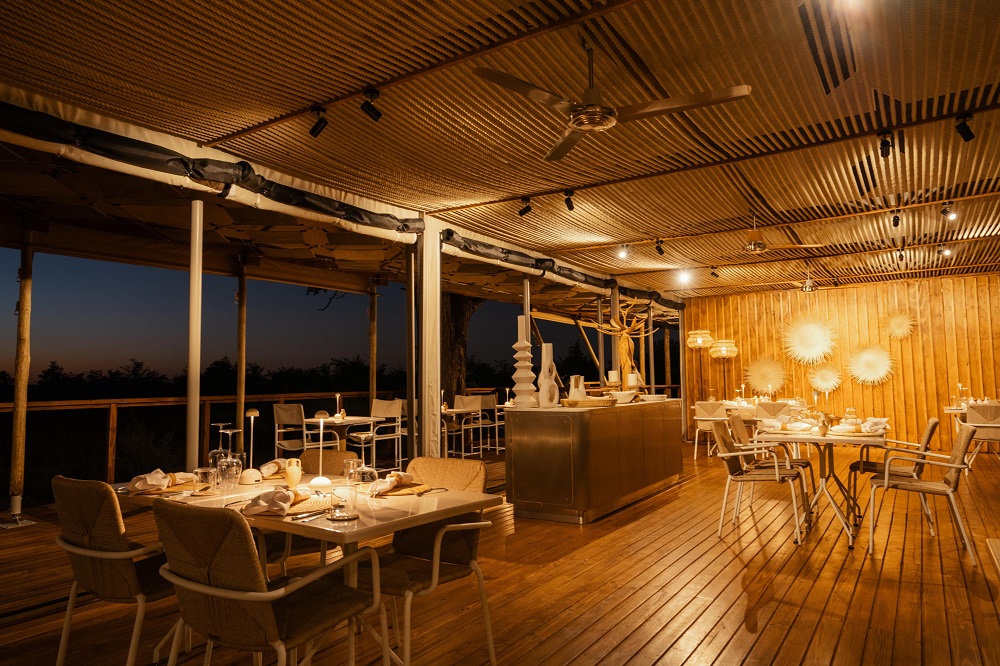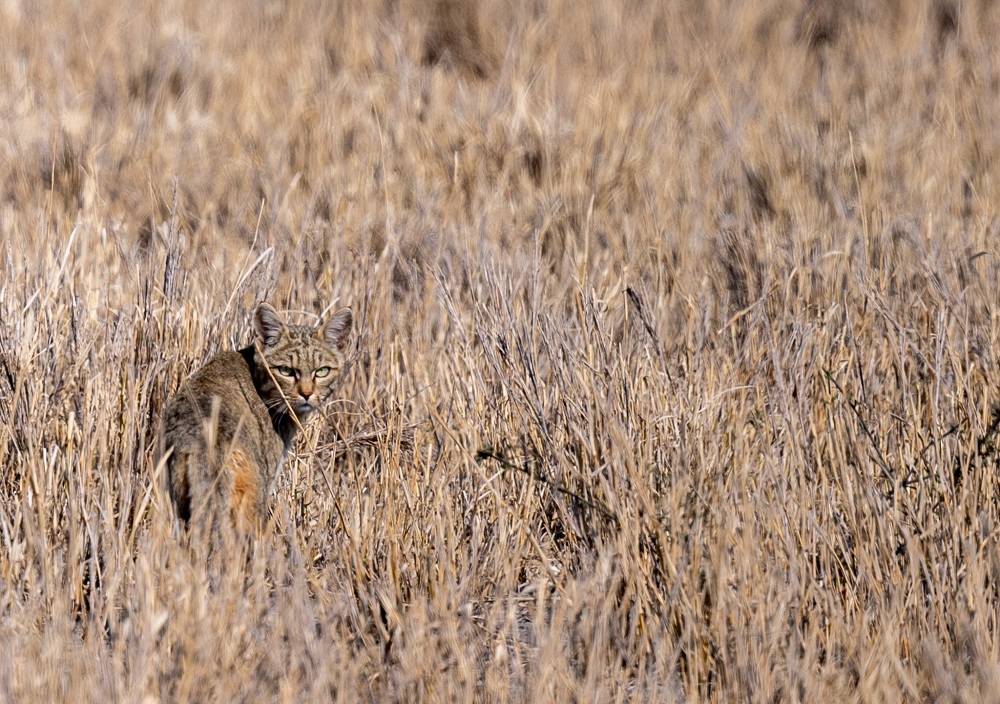Fish Eagle Safaris’ Lyndon Duplessis recently visited several Botswana properties on an educational trip; here is his report:
“March is typically as early in the year as you can head to Botswana and still have a really good experience. The rainy season is just about over (but you’re still likely to experience a few thunderstorms and showers), the grass is green and the animals look healthy. That same grass, if the rains were particularly good, can be a bit on the tall side and that was definitely the case this year. Botswana received a copious amount of rain. Ask anyone in Botswana and they will say that is a good thing. Their currency, the Pula, literally means rain. And they say “pula,” their version of cheers, when they toast a drink. Having said that, it does present some challenges. That nice looking green grass can obscure some of the smaller mammals and make them more difficult to see. The abundance of water – everywhere – tends to disperse the animals who might otherwise have to gather around remaining sources during the dryer months. The good news? All the animals are still around, you just have to work a bit harder to see them and get a little bit lucky. During the course of a full length safari (6 to 9 nights), we like your odds and this trip backed up that sentiment.
Gomoti Plains
My first stop was Machaba Safaris’ Gomoti Plains Camp. I had heard a lot of good things about this camp and the area that it was in. The part of the Okavango Delta the camp is located in has become a hotbed for animal sightings and action in general. It did not disappoint during my all too brief 2-night stay. The camp itself is classic level with plenty of comfort and space but nothing over the top. The staff to guest ratio felt very high to me and everyone was friendly and helpful. Our guide Carl was excellent and the food was delicious.
At one point on a drive my allergies started acting up due to the grass but luckily I had some allergy medication I took which cleared them up in a timely manner. If you are headed to Botswana early in the year this is definitely something you should bring with you. As well as a buff and some eyewear to protect your face from any grass seeds the vehicle kicks up.
The wildlife viewing was a bit tough to come by but we did, thanks to our guide, get some good views of lions. Once during the day hiding under some thick bushes and then again during an after dinner night drive. In fact we saw a large pride of at least 10 lions on the move and hunting. We kept up briefly but they seemingly vanished into the tall grass. General plains game species such as giraffes, zebras and various antelopes were not hard to find.
One interesting tidbit I overheard was that a couple of the guests were visiting this camp for the 5th time. I think that is no accident and a very good indicator of the quality of service and the amount of animals in the area. Our guide said as the year moves on the animals flock to the river and become very easy to observe.
Kwando 4 Rivers
If two nights at Gomoti were too short a stay then the one night I got to spend at Kwando 4 Rivers was really quite tragic. But it can be difficult to balance seeing new camps with a tight schedule, so in this case, I had to settle for what I could get. I really like the location of this camp with the large main area overlooking permanent water. There is no boating here but mokoro can be done year round. The rooms were impressive and very spacious.
The grass here was even taller than at Gomoti so when we heard that a lion had been spotted a little ways away – but we had to go off road most of the way to get there before sunset – we knew it was going to be an adventure. It was bumpy and the grass was flying everywhere. The occasional log or channel of water slowed us down from time to time but we got there and got to see two female lions with 6 cubs on a kill and then the cubs started suckling from the mothers. Just a fantastic sighting. The only bad news was that we had to make the whole trek back to camp before we ran out of daylight. Oh well – it was very much worth the effort.
A couple of things that Kwando does that not everyone else does; they have a guide and a spotter on their game drives and they have communal dinners. We like both and feel like they add to the safari experience.
Dinaka
It was now time for my trip with Ker and Downey Botswana to start. First up, after meeting all of my fellow travel companions at the airport, was Dinaka Camp, located just about a 25-minute flight from Maun on a large private conservancy north of the Central Kalahari Game Reserve. I was anxious to get a look.
Just like the rest of northern Botswana there had been good rains earlier in the year so the landscape was not what you might expect of the Kalahari. Trees, grass, plants and flowers were everywhere looking very healthy and vibrant. There was a great abundance of butterflies and the plains animals looked to be in great shape. We got to see some action right out of the gate on our evening game drive near the airstrip. As we approached there were lions chasing a small herd of zebras in a cloud of dust. No kill but great to experience that excitement so early in our stay.
That evening we drove to a stargazing deck for our sundowner. From there you can see how expansive the conservancy is as you are surrounded by it. The sunset from there was also superb and of course you have a mobile bar and all the snacks you can shake a stick at. Not a bad start. A bit of a curiosity on the night drive back to camp – our vehicle spotted a Kalahari mole rat. We were told it was an extremely rare sighting. Now you know.
We stayed around the campfire after dinner taking advantage of the lit watering hole by the main area. Over the course of the night we saw a leopard, followed by a brown hyena, finally followed by a quick moving honey badger. Well worth a late night.
Some additional highlights at Dinaka include seeing the 4 or 5 white rhino which are located on the property. Our guides did a wonderful job tracking them through the tall grass. It actually looks like a motorcycle drove through the grass where they had been. The camp also has numerous hides located across the property which offer wonderful photographic opportunities. The second night we got to experience some lions roaring right next to our vehicle. And the staff was wonderful and quite talented as far as singing goes. I think this camp really jumped off the page for me and I would highly recommend you check it out.”
If you are up for a last-minute trip to Botswana or thinking ahead for 2026 or even 2027, by all means reach out to Lyndon at lyndon@fisheaglesafaris.com. He’d be happy to respond by email or arrange a Zoom meeting for you to be introduced to a couple of the members of our team. There’s nothing we like more than talking about Africa and finding out more about exactly what kind of a trip you might have in mind. We can also be reached by phone at 713-467-5222 or 1-800-513-5222 any time of the day and weekends. Please leave a message with the answering service and one of us will get back to you promptly.


